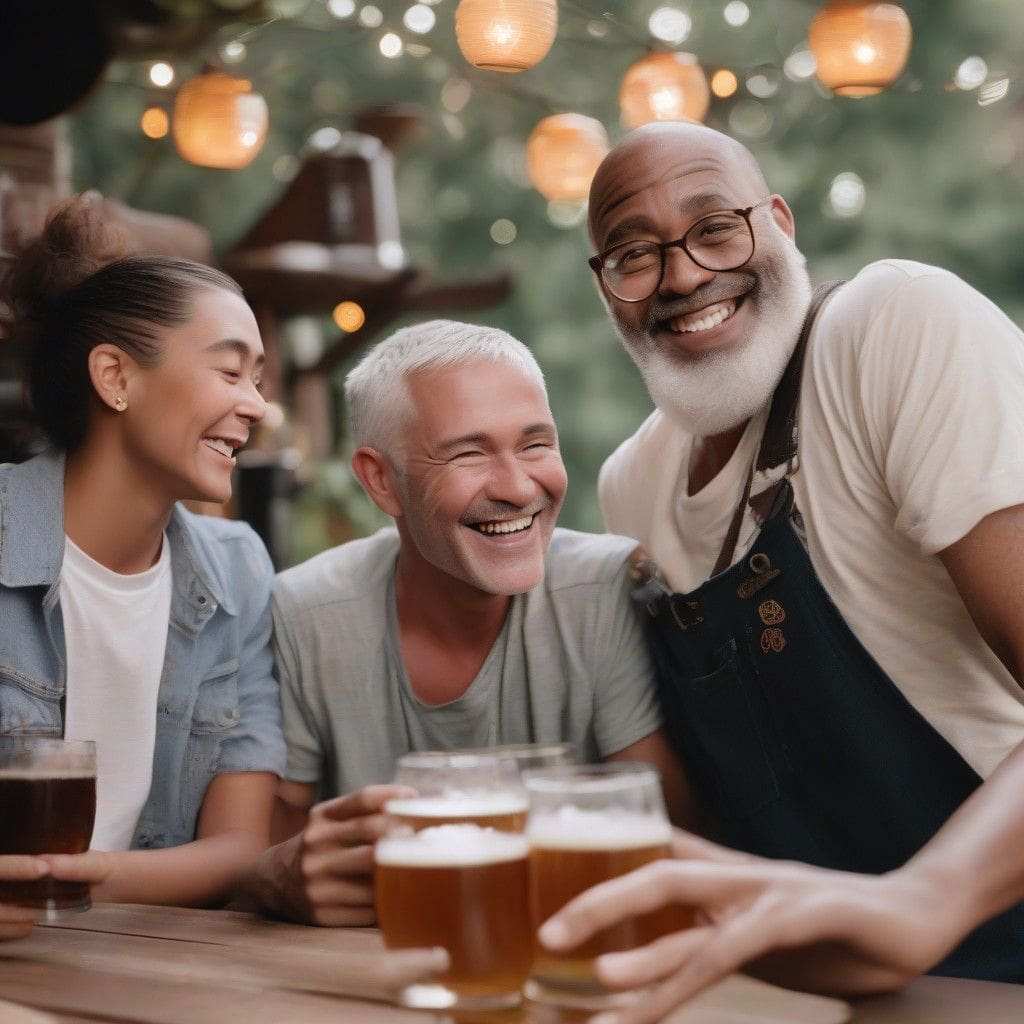New research by AIport and Turing Post highlights an intriguing intersection of artificial intelligence, generational stereotypes, and cultural interpretation through the lens of beverage consumption—specifically beer. This study evaluates how generative AI models interpret and depict various generational groups, from Baby Boomers to Generation Z, revealing both the persistent stereotypes and surprising elements that emerge in their portrayal.
The analysis included over 1,200 AI-generated images from four leading AI models: Stable Diffusion, Midjourney, YandexART, and ERNIE-ViLG. These models generate images based on prompts, and their outputs provide insight into how generations are visually represented across global contexts.
Historically, Baby Boomers have been viewed through a lens of nostalgia and conservatism. Recent findings show that the Midjourney model reflects this stereotype, portraying around 80% of Boomers in somber, pensive positions. Images often depict these individuals bundled up, lost in thought, or gazing wistfully into the distance. Surprisingly, the ERNIE-ViLG model paints a different picture, depicting over 90% of Boomers as cheerful and smiling, demonstrating how AI training datasets and design philosophies can shape outputs significantly.
The contrasting portrayals of Boomers underscore the cultural and regional differences that AI models represent. It sheds light on how the generational identity is often viewed globally yet can differ in local contexts. AI models can inadvertently reinforce stereotypes based on their training sets, which may not accurately reflect the diversity within generational experiences.
Moving to the younger generations, particularly Millennials and Gen Z, the AI models often depict these groups with vibrancy and diversity. Generation Z, often characterized by their global connectivity and progressive values, is represented in dynamic, highly detailed scenarios that emphasize cultural inclusivity. This portrayal aligns well with the characteristics of India’s younger population, who are indeed part of a broader, interconnected global narrative.
For Millennials, the stereotypes of career instability or obsession with ‘avocado toast’ were challenged. The research showed that across all AI models, Millennials were depicted in various work-related scenarios that embraced diversity. This finding suggests an evolution of stereotypes, indicating that cultural identities are converging and showing a more nuanced understanding of what it means to be a Millennial in today’s society.
One of the most unexpected elements highlighted in the study is the prominent presence of beer in the AI-generated imagery. Regardless of generational affiliation, beer emerged as a common theme within the images. This cross-generational depiction serves as a fascinating point of connection, suggesting that certain social habits, like enjoying a drink, traverse age boundaries.
The presence of beer as a common element offers a reflection of social culture that extends beyond mere association with specific generations. It reveals an inclination towards shared experiences, suggesting a cultural bonding over beverage consumption that resonates across demographic lines. While drinking habits differ, especially in culturally diverse regions like India, the imagery of beer signifies broader social interactions despite differing normative practices surrounding alcohol.
The research employed neutral prompts, such as “a Millennial at work” and “a Boomer relaxing,” to eliminate biases possibly introduced by more specific inputs. This method allowed a closer observation of generational identity as mirrored in AI outputs. The stark contrasts observed highlight how different cultural elements and training backgrounds of AI models create varied representations of the same generational group.
Hon. Lisa Sparks, Ph.D., Founding Dean of the School of Communication at Chapman University, commented on the study’s implications: “These images afford a new lens through which to explore how AI interprets generational identity. For an Indian audience, this opens up discussions about how global AI models understand cultural identity and whether their interpretations genuinely reflect our values or inherent biases.”
In conclusion, the findings from this research not only reflect how AI shapes public narratives around different generations but also emphasize the nuances and complexities involved. With prominent stereotypes re-evaluated and unexpected commonalities uncovered, businesses and marketers can utilize these insights for more targeted and informed campaigns.
Understanding these generational portrayals is essential in today’s marketing landscape as companies strive to create effective strategies that address the sentiments and values of diverse consumer bases. As the relationship between AI and societal norms continues to evolve, keeping a pulse on these representations will be crucial for crafting relevant and resonant marketing messages across platforms.
